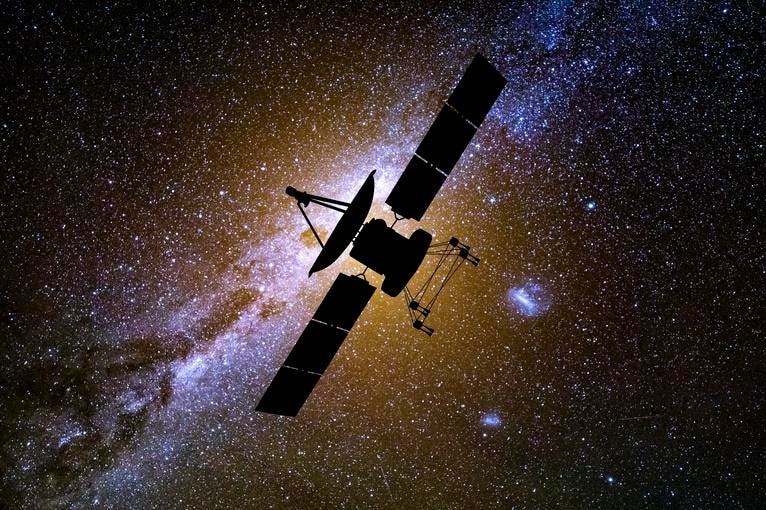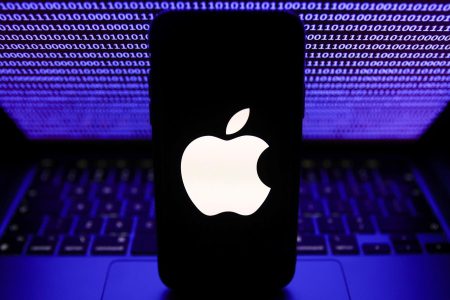Shelli Brunswick is COO of Space Foundation and a speaker on tech used for the betterment of humanity and planet Earth.
Space. It’s open territory. There are more than 90 countries operating in space today. But no single country owns space. This makes it both exciting as a vast terrain with limitless innovation potential but also a bit dangerous, as assets could be compromised, placing structures, governments and people at risk.
In honor of Cybersecurity Awareness Month, it’s worth looking at how space functions within this context as well as what we can do to protect ourselves and our assets.
Indispensable Sources Of Information
One can’t consider space and technology without thinking about satellites. They’re the most obvious example of space technology, and they pose both cybersecurity risks and solutions.
According to the United Nations Office for Outer Space Affairs (UNOOSA), more than 14,000 satellites have been launched into space. And up to 100,000 more satellites are expected to be launched within the next decade. SpaceX alone has launched 5,200 satellites since its inception and has plans to launch thousands more. Other nations are certain to significantly add to their satellite networks as well.
This mass proliferation translates to an unprecedented amount of information being transmitted back to Earth. There are exceptional benefits. Satellites make things like mobile phones, GPS and even Zoom possible. They also provide vital information about what’s happening on Earth in terms of climate change and the effects of natural disasters. Satellites play a role in facilitating financial transactions. They also enable monitoring of government and military operations, electrical grids and other critical infrastructure—and much more.
So, if a cyberattack targeted a satellite network—and succeeded—it could be catastrophic, from disrupting entire financial systems or the supply chain to crashing transportation systems and power grids. It could even result in biological attacks on our water supply or through our agriculture. There’s also the potential to obtain sensitive government information as well as invaluable intellectual property and trade secrets. Then, there’s our military. Imagine the havoc and harm bad actors could cause if they tapped into our systems or located weapons and other assets.
These scenarios sound a bit doomsday, but these are legitimate possibilities for any nation that operates such technology. Cyberthreats sadly are quite real, and satellites represent only one space technology on-ramp to many.
What To Do About It
It’s clear how cyberattacks on space assets could have a significant impact on the global economy and national security. So, how do we prevent them?
First, we need to start thinking about space as a critical infrastructure. Because so much of our daily lives now rely on space assets, we must protect them. This means finding and funding the resources to safeguard them just as we would roads, bridges, airports and ports. By better integrating space into resilience planning strategies, resources can be allocated to secure assets in ways that aren’t happening today.
Second, we must form partnerships. Although global partnerships are the norm in the space industry, we need to extend our ecosystem to ensure it includes the cybersecurity community. Together, we can leverage the best of space and cyber to invent innovative solutions to the complex threats we face.
Additionally, the companies developing space technologies must take precautions. It’s no longer solely about what we can create for space that enhances life on Earth or what we can learn from space. It’s ensuring the protection of space innovation and communication. Steps could include implementing security-by-design principles, adopting zero-trust architecture and investing in security teams to spot any suspicious activity as well as address potential vulnerabilities to ensure attackers have no viable entry points to systems.
The technologies and the people capable of protecting space assets are available today. We must use them to stay one step ahead of the “bad guys” as cyber continues to evolve.
Two-Way Street
The really exciting thing is that space technologies aren’t just sitting there, ripe for bad actors to infiltrate. They can also aid in the cyber fight. For example, satellites are exceptional at monitoring tasks—in other words, they can be used to warn organizations and entities. This includes picking up malicious activities such as phishing attacks.
Because of their accuracy in time measurement, satellites can also help in the verification of digital signatures and other authentication protocols. With accurate, trusted time stamping, no one can change a document, even the owner, without the change being noted; integrity can’t be compromised. Any attempt would be recognized and could trigger an alert.
And the space industry is the place for quantum technology. We’ve done so much work in this area (that I’ve written about previously). Quantum key distribution (QKD), in particular, is an excellent way to protect highly sensitive communications. Using quantum mechanics, two parties can communicate with a secret, randomly generated key that can encrypt and decrypt messages. Any intrusion attempt by a third party will be detected. Even when attackers gain access to underlying algorithms, they still can’t break in, which is a pretty amazing feat. Several U.S. government agencies are developing QKD initiatives.
The space industry has always been a leader in research and development and is happy to help ensure the security of assets. NASA, for example, is persistently launching initiatives, like its Cybersecurity Machine Learning project within the NASA Center for Climate Simulation. Other technology companies from Boeing to IBM are also using technology in new ways to help detect and mitigate attacks as private industry and the government grow more dependent upon each other in the quest for security.
There’s so much happening at the intersection of space and cyber. It gives me hope for the future of innovation and national security, particularly as new companies and innovators enter the field. Space and cyber form a fantastic and necessary pairing that can yield the awareness, resources and commitment to stay ahead of bad actors and successfully secure our future.
Forbes Technology Council is an invitation-only community for world-class CIOs, CTOs and technology executives. Do I qualify?
Read the full article here










